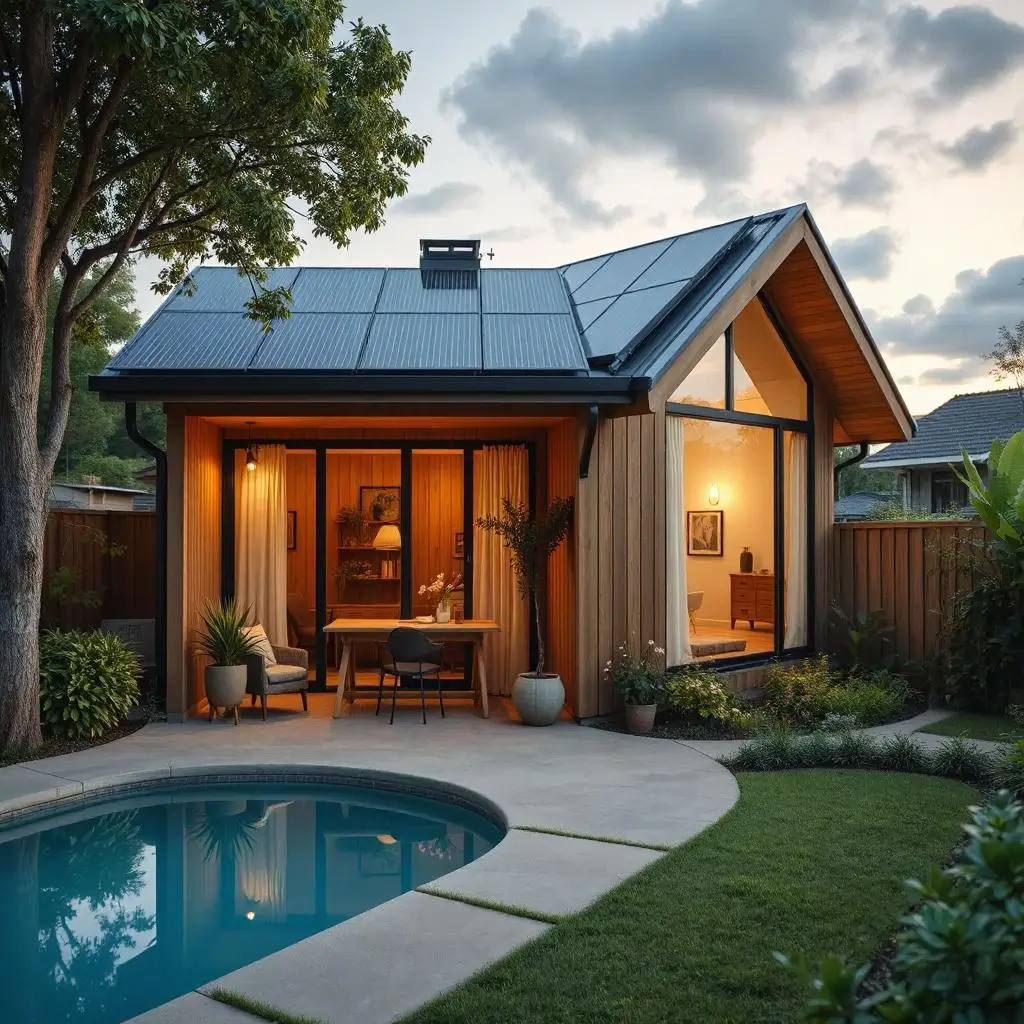1. Introduction
- Creating a greener, low-carbon home doesn’t always require major renovations. With simple do-it-yourself (DIY) projects, you can reduce energy consumption, lower your carbon footprint, and create a healthier living space. This guide explores practical, budget-friendly DIY ideas to make your home more sustainable.
2. Install Energy-Efficient LED Lighting
Switch to LEDs: Replace incandescent bulbs with LED alternatives to cut energy use by up to 80%.
Use Smart Bulbs: Opt for app-controlled bulbs that allow you to schedule lighting times and dim settings.
Motion Sensors & Timers: Install automatic lighting solutions to reduce unnecessary energy consumption.
DIY Solar Lanterns: Repurpose mason jars with small solar panels for outdoor lighting.
Reflective Light Placement: Use mirrors and light-colored walls to enhance natural lighting efficiency.
3. Weatherproof Your Home
Seal Windows & Doors: Use weather stripping to prevent heat loss and reduce energy costs.
DIY Window Insulation Kits: Install plastic film insulation to trap heat during colder months.
Install Draft Stoppers: Make simple fabric door draft stoppers to block cold air.
Use Heavy Curtains: Thermal curtains help regulate indoor temperatures year-round.
Caulking Cracks: Identify and seal gaps in walls to improve insulation.
4. Make a DIY Solar Heater
Create a Passive Solar Heater: Use recycled aluminum cans to build a low-cost solar air heater.
Install a Mini Solar Panel: Power small household devices with DIY solar panels.
Use a Solar-Powered Water Heater: Convert an old water tank into a solar-heated unit.
Reflective Window Film: Apply films to increase solar heat absorption in winter.
Solar Cooking: Build a DIY solar oven using cardboard, foil, and glass.
5. Start a Composting System
DIY Compost Bin: Convert an old trash can into a composting station for organic waste.
Worm Composting: Use red worms in a wooden bin to break down food scraps faster.
Use Kitchen Scraps: Save vegetable peels and coffee grounds for nutrient-rich compost.
Bokashi Method: Try indoor composting with fermentation to speed up the process.
Garden Mulching: Utilize composted materials to enrich soil and reduce water usage.
6. Collect and Reuse Rainwater
DIY Rain Barrel: Use a repurposed barrel to collect and store rainwater for gardening.
Drip Irrigation System: Set up a gravity-fed drip irrigation system from your rain barrel.
Rain Chain Installation: Replace traditional downspouts with decorative rain chains.
Filter and Purify Water: Use basic filtration to make rainwater safe for household use.
Greywater Recycling: Redirect shower and sink water to irrigate your garden.
7. Build a Vertical Garden
Pallet Herb Garden: Use old pallets to create a space-saving vertical herb garden.
Hanging Bottle Planters: Reuse plastic bottles for small vertical planting spaces.
Gutter Garden System: Install wall-mounted gutters to grow herbs and flowers.
DIY Trellis System: Train climbing plants to grow on homemade trellises.
Self-Watering Planters: Use a two-bucket system to reduce water wastage.
8. Make Natural Cleaning Products
Vinegar and Baking Soda: Mix for an all-purpose cleaning spray.
Citrus Peels and Vinegar: Create a homemade disinfectant with citrus-infused vinegar.
DIY Laundry Detergent: Use natural soap, borax, and washing soda.
Essential Oil Air Fresheners: Replace chemical sprays with homemade scented diffusers.
Reusable Cleaning Cloths: Swap paper towels for washable microfiber cloths.
9. Create DIY Insulation for Your Home
Use Recycled Denim or Wool: Insulate walls using sustainable materials.
Bubble Wrap for Windows: Attach bubble wrap to glass for temporary insulation.
DIY Insulated Curtains: Sew thick, thermal-lined curtains to trap heat.
Reflective Foil Panels: Place behind radiators to increase heat efficiency.
Door Snake Draft Stoppers: Sew fabric tubes filled with sand or rice to block drafts.
10. Build a DIY Solar-Powered Device Charger
Portable Solar Charger: Assemble a compact solar panel to charge phones and tablets.
Solar-Powered Outdoor Lights: Convert old lamps into solar-powered versions.
DIY Battery Bank: Store solar energy for emergency power backup.
Solar Fan: Create a small ventilation fan powered by solar energy.
Window-Mounted Solar Panel: Power a small LED setup for nighttime lighting.
11. Reuse and Upcycle Household Items
Repurpose Old Furniture: Turn old chairs and tables into modern pieces.
Glass Jar Storage: Use glass jars for organizing pantry staples and DIY candles.
Old T-Shirts as Rags: Convert worn-out clothes into reusable cleaning cloths.
Wooden Pallet Projects: Build furniture, shelves, and garden beds.
Recycled Art Decor: Use scrap materials for DIY wall art and home accessories.
12. Plant Shade Trees and Bushes
Strategic Tree Placement: Plant trees around your home to provide natural cooling.
Windbreak Bushes: Use dense shrubbery to reduce wind chill in winter.
Living Green Walls: Install vertical plant walls to improve air quality.
Fruit-Bearing Trees: Grow fruit trees for fresh produce and shade benefits.
DIY Hanging Gardens: Utilize balcony space for eco-friendly greenery.
13. Comparison Table: Cost vs. Savings of DIY Green Projects
| DIY Project | Estimated Cost | Potential Savings | Environmental Benefit |
| LED Lighting Upgrade | $20 - $100 | Up to 80% on lighting bills | Reduces energy consumption |
| Weatherproofing Home | $50 - $200 | 10-20% on heating/cooling | Lowers carbon footprint |
| Solar Heater Installation | $100 - $500 | $200 - $500 annually | Uses renewable energy |
| Composting System | $30 - $100 | Reduces landfill waste | Improves soil health |
| Rainwater Collection | $50 - $200 | Lowers water bill by 30% | Saves water resources |
14. Conclusion
Simple DIY projects can significantly reduce your home’s carbon footprint while also saving you money. Whether through energy-efficient lighting, composting, or solar-powered solutions, these eco-friendly changes help create a more sustainable lifestyle. By implementing these ideas, homeowners can contribute to a greener planet and long-term savings.
Disclaimers
Savings and costs may vary based on location and implementation.
Some projects may require local permits or compliance with building codes.
Solar-powered solutions depend on weather conditions and regional sunlight availability.
DIY projects should be carried out safely, following all necessary precautions.
Product recommendations are general and subject to market availability.
Author: Dipika Kumari
Publication Date: 27-03-2025
Email: [email protected]
